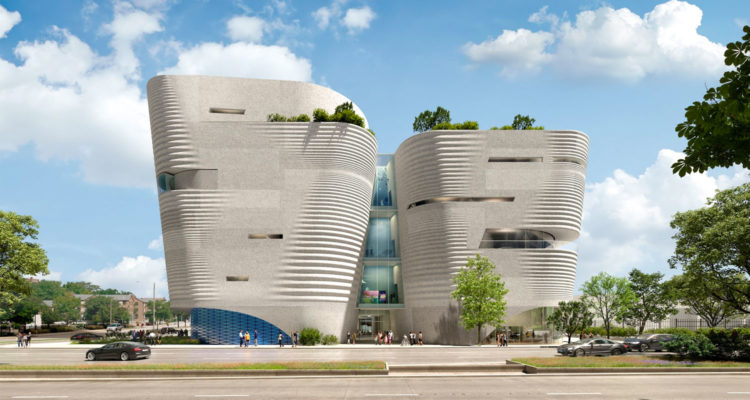FIRST MILWAUKEE PUBLIC MUSEUM COLLECTIONS PACKED, READY TO MOVE
Collections staff begin packing off-view History collections as momentum builds toward Future Museum
MILWAUKEE — This month, collection staff at the Milwaukee Public Museum (MPM) began the multi-year effort to carefully pack objects in their collections in preparation for MPM’s move to its Future Museum. The first round of packing will consist of 23,000 glass and ceramic items from the History collections, including items like vases, teapots, sugar dishes, creamers, teacups, saucers, plates, platters, serving dishes, salt cellars, and figurines – objects that are inorganic and can therefore be in storage for an extended amount of time without jeopardizing their safety. All items currently being packed have been in storage at the Museum.
“The MPM Curatorial team is proud to have hit this point in the moving process after several years of preparation,” said Chester Read Curator of History Collections Jackie Schweitzer. “Packing and moving a museum isn’t as simple as moving in and out of a house, we have to make sure each item is identified, tracked, packed and protected for its journey.”
To prepare for their journey, every object will be wrapped in acid-free tissue and padded in archival foam to protect it in transport. Wrapped and padded objects will then be packed into collapsible, reusable crates measuring 4 feet by 4 feet by 4 feet. The first round of packing will include about 50-60 of these crates.
To maximize the use of each crate while protecting all objects, the MPM Curatorial team worked with Wisconsin-based reusable packaging company Orbis to create internal dividers for the crates that can be adjusted, resized and removed in order to efficiently pack objects together and separate them from other objects.
“The archival material we use to preserve and protect our collections items is inert, acid-free, and dye-free, so the original quality of those items is not compromised during the packing and moving process,” said MPM Collections Move Project Manager and Registrar Sara Podejko. “Since this material is safe to use with many different objects, we’re able to reuse it through the entire packing process; an important element of our preparation which will allow us to be as sustainable as possible and eliminate unnecessary waste as we pack and move more than 4 million objects in total.”
Before packing could begin, the Museum team inventoried all items. Each object has received a barcode that will accompany the item and, when scanned, will bring up all of the digital data associated with that object. This system helps museum curators keep track of each of the millions of objects while in transit, pinpoint their locations in storage, and maintain a scientific record accessible to researchers for decades to come.
“In 2019, our small team started to fill in gaps in our digital records,” said Schweitzer. “Since that time, we have transcribed and imported over 144,000 handwritten object records into our collection management system, allowing for streamlined inventory as well as barcoding to track each object throughout the moving process. Now our team has expanded to include additional individuals dedicated to inventorying and packing our collections.”
Once packed, crates will be stored at the Museum until they are loaded onto trucks and moved – either to a secure, off-site storage facility or to the Future Museum itself. As items are unpacked, crates and packing materials will be reused until all collections are safely transferred to their new locations.
More information about the Future Museum project is available on the MPM website.
About the Milwaukee Public Museum
The Milwaukee Public Museum is Wisconsin’s natural history museum, welcoming over half a million visitors annually. Located in downtown Milwaukee, the Museum was chartered in 1882, opened to the public in 1884, and currently houses more than 4 million objects in its collections. MPM has three floors of exhibits that encompass life-size dioramas, walk-through villages, world cultures, dinosaurs, a rainforest, and a live butterfly garden, as well as the Daniel M. Soref Dome Theater & Planetarium. MPM is operated by Milwaukee Public Museum, Inc., a private, non-profit company, housed in a county-owned facility with collections that are held in trust and supported by Milwaukee County for the benefit of the public.
About the Future Museum
The Milwaukee Public Museum, Wisconsin’s natural history museum, will be relocating from its current location on Wells Street in downtown Milwaukee to a newly constructed building due to open by early 2027.
To be located on a 2.4-acre site at the corner of Sixth and McKinley Streets in the Haymarket neighborhood adjacent to the city’s Deer District, the Future Museum will be the largest cultural project in Wisconsin history. Heavily influenced by the ecological histories of Milwaukee and Wisconsin, the design of the new Museum will be reminiscent of the geological formations in Mill Bluff State Park, emblematic of the region’s diversity of landscapes formed by the movements of water through time. The building will be approximately 200,000 square feet, including five stories, with an additional 50,000-square-foot collections storage building.
To learn more about the Future Museum, visit mpm.edu/future.
Find more press releases HERE.

